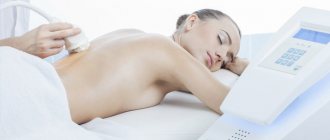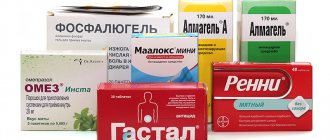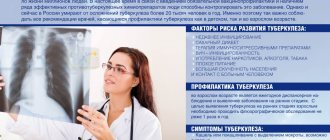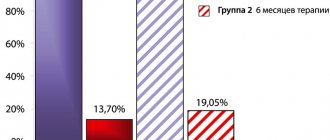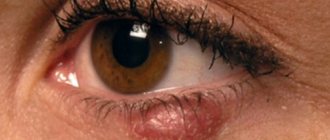Gastritis
A morphological concept used to designate inflammatory and dystrophic changes in the gastric mucosa of different origin, course and clinical manifestations. It follows from this that the final diagnosis is valid only through histological examination of gastric biopsies.
It is quite difficult to judge the true epidemiology of chronic gastritis, which is associated with the need for morphological verification and the often hidden course of the disease.
- H.Pylori-associated gastritis accounts for about 85%.
- Autoimmune gastritis 1-5%.
- Special forms of gastritis - no more than 10%.
Contrary to common misconceptions among the population and even among some medical specialists, not everyone has chronic gastritis and is not a “harmless” disease. In some cases, against the background of chronic H. Pylori-associated gastritis, precancerous processes may occur asymptomatically, which cannot be diagnosed without a biopsy of the gastric mucosa. Timely detection and treatment of infections not only prevents their development, but can also reverse these changes.
Precancerous changes and diseases of the stomach, risk of malignancy (according to Baranskaya E.K., Ivashkin V.T. 2002 with amendments)
| Precancerous conditions and diseases of the stomach | Risk | Risk value % |
| Absolute | 70-90 |
| Unconditional | 20-70 |
| Definite | 10-20 |
| Likely | 5-10% |
| Possible | Less than 5 |
* - conditions that cannot be reliably diagnosed without examining gastric biopsies are highlighted in red.
H. Pylori-associated gastritis, as a rule, does not have obvious and specific symptoms, and screening measures for the microorganism are not included in the clinical examination plan in healthcare institutions.
The main method of treatment is antibacterial therapy with mandatory follow-up monitoring.
I have been diagnosed with Helicobacter pylori – what should I do?
If a positive test for Helicobacter pylori is detected, you should consult a gastroenterologist or therapist. Antibiotics are used to treat infection, and only a doctor prescribes them.
Is it possible to cure Helicobacter by taking the drug de-nol, as shown in advertising, or with folk remedies? You can completely get rid of Helicobacter pylori infection only with certain antibiotics.
Do I need to treat myself with antibiotics if nothing bothers me and the test result for Helicobacter is positive? The infection may not bother you, in 70% of cases this happens, gastritis proceeds “silently” for years, but after a few years, due to low-grade inflammation, atrophy of the mucous membrane occurs and its transition to stomach cancer cannot be ruled out. In each specific case, the decision to carry out treatment is made by the attending physician.
Helicobacter pylori infection is very common among the population, is there any point in treatment if you can become infected again later? Yes, re-infection is possible, but it does not happen often - approximately 6 people out of 100 treated people acquire the infection again if the rules of prevention are not followed. They are very simple - wash your hands before eating, don’t try other people’s food, don’t eat in dubious eateries where you can’t be sure of the correct handling of the dishes, don’t kiss people you’re not very close to. It is also important, when a Helicobacter pylori infection is detected, to test all family members for it, starting from adolescence, and ideally, to treat all infected people at the same time. Children, if nothing bothers them, are treated from adolescence - from 12-13 years. If a child complains of abdominal pain or nausea, then examination and treatment are carried out according to indications at an earlier age.
People very often complain about exacerbation of gastritis. But in many cases it can be cured by getting rid of the bacteria that caused the inflammation of the stomach. If the infection is left unattended, over time, gastritis will turn into atrophic. Then the patient will need to take a biopsy at least once a year in 5-7 places of the stomach in order not to miss cancer.
Peptic ulcer of the stomach and duodenum
Peptic ulcer disease is usually called a disease characterized by the formation of an ulcerative defect that spreads beyond the muscular membrane.
Peptic ulcer disease is one of the most common gastrointestinal diseases. According to clinical observations, about 7-10% of the adult population of the world suffers or have suffered from this disease, while the results of pathological studies give higher figures, which indicates that in a number of patients the disease is hidden. Thus, in clinical practice it often happens that the first symptom of a peptic ulcer is bleeding, which is manifested by vomiting mixed with blood or darkening of the stool. In particular, an asymptomatic course is typical for active smokers.
The frequency of detection of H. Pylori on the surface of the gastric epithelium in patients with duodenal ulcer is quite high and, according to various authors, ranges from 91 to 100%. Moreover, the detectability of bacteria directly depends on the quantity and quality of diagnostic techniques used. In cases where the formation of a defect in the mucous membrane of the stomach and duodenum occurs while taking non-steroidal anti-inflammatory drugs (analgesics), an infection is also most often found.
The formation of an ulcerative defect is caused by the toxic effect of H. Pylori enzymes on the gastric mucosa and is associated with the presence of phospholipases, mucinases, proteases and urease activity in strains on the one hand and the peculiarity of the immune response of the human body on the other, which together can lead to the occurrence of the disease against the background of chronic gastritis.
Diagnosis of peptic ulcer:
Clinical picture (symptoms and signs of the disease). The main clinical symptom is pain in the upper abdomen, the nature of which depends on the size and location of the ulcerative defect, concomitant inflammation of the mucous membrane of the stomach and duodenum, involvement of the serous membrane in the pathological process, and the individual threshold of pain sensitivity.
The leading method for diagnosing the presence of ulcers of the gastroduodenal mucosa is endoscopic examination.
Analysis for H. Pylori is a necessary component of the examination plan for a patient with suspected peptic ulcer disease or with a detected ulcer.
Requirements for eradication recommended by WHO
Treatment regimens for Helicobacter pylori infection have been developed and introduced into medical practice over the course of 30 years.
Currently, the Maastricht IV recommendations from 2005 are used. The criteria for the effectiveness of the Helicobacter treatment regimen are:
- Positive result in 80% of patients
- The duration of active therapy is no more than 14 days
- Use of non-toxic drugs
- The occurrence of side effects in no more than 10–15% of patients
- The intensity of side effects should not be such as to stop treatment
- Low drug resistance of Helicobacter
- Ease of use of medications
- Low frequency of taking medications. Use of long-acting drugs
- Interchangeability of medications in various treatment regimens
Gastric adenocarcinoma
Adenocarcinoma (stomach cancer) represents up to 95% of all malignant tumors of the stomach.
There are two histological subtypes with different epidemiological and prognostic characteristics:
- Intestinal type;
- Diffuse type.
Epidemiology
Currently, there is a worldwide trend of decreasing mortality from stomach cancer. However, despite this, GC is in 4th place in terms of incidence among all malignant neoplasms and in 2nd place among the leading causes of mortality from cancer (Parkin DM et al., 2001; Crew KD Neugut AI 2006). This is largely due to the fact that in the early stages the disease is asymptomatic, and the standard medical examination plan in healthcare institutions does not include either endoscopic diagnosis or testing for H. Pylori infection.
Countries with a high incidence of gastric cancer are simultaneously characterized by a similar level of H. Pylori prevalence in the population. At the same time, the decrease in the prevalence of infection in developed countries parallels the decrease in the incidence of stomach cancer (Crew KD Neugut AI 2006).
*NSAIDs - non-steroidal anti-inflammatory drugs; **ASA-acetylsalicylic acid.
Eradication of Helicobacter with propolis
An aqueous solution of propolis is excellent in the fight against Helicobacter pylori.
This technique was patented in 2006. The authors are a group of Russian scientists.
Currently, propolis therapy is not included in official eradication schemes. Researchers insist on its effectiveness. The diagram looks like this:
- An aqueous solution of propolis with a mass fraction of the active substance of 25–30% orally 3 times a day before meals
- Propolis in oil – 2 times a day
- The drug "omeprazole" in standard dosage
- The duration of treatment ranges from 2 to 4 weeks.
MALT lymphoma
MALT lymphoma is an extranodal marginal zone B-cell lymphoma associated with mucous membranes. It is a non-Hodgkin lymphoma, the substrate of which is sufficiently mature malignantly transformed lymphocytes originating from solitary lymphoid follicles of the mucous membranes.
Currently, H. Pylori is considered as the main causative agent of the disease, but the incidence in the world is low and amounts to 1 case per 30,000-80,000 infected individuals.
Extragastroduodenal diseases and conditions with an established pathogenetic role of infection.
- Iron deficiency anemia of unspecified etiology;
- Idiopathic thromocytopenic purpura;
- Vitamin B12 deficiency.
According to the provisions of the fifth Maastricht consensus, these patients are indicated for diagnosis and treatment of H. Pylori infection. Other extragastroduodenal diseases and conditions in which the pathogenetic role of the infection is being investigated. H. pylori has positive and negative associations with a large number of other extragastroduodenal conditions/diseases.
The etiology of these relationships has not been proven.
H. pylori infection and the cytotoxin-associated gene product CagA(+) of H. Pylori strains are associated with the development of atherosclerosis. A relationship has been identified between H. pylori and some neurological diseases (stroke, Alzheimer's disease, Parkinson's disease). However, these data are insufficient to establish a clear cause-and-effect relationship or relationship with treatment. In a number of populations, an inverse relationship has been found between the frequency of H. pylori infection and the prevalence of certain diseases, such as bronchial asthma and obesity.
Also of considerable interest are the data that revealed that the correlation between H. Pylori seropositivity and preeclampsia was very significant with an odds ratio = 9.22. This association was even more pronounced during pregnancy with both preeclampsia and fetal growth restriction (OR=35.56). At the same time, the highest risk was determined by H. Pylori CagA(+) strains (Cardoropoli S. et al., 2011). Moreover, another study showed that antibodies against CagA can cross-react with the bate-actin of cytotrophoblast cells, hypothetically explaining the above-described clinical association (Franceschi F. Et al., 2012).
Diagnosis of H. Pylori infection
Methods for diagnosing infection can be divided into invasive and non-invasive.
Invasive techniques:
- histological method;
- helpil test (rapid urease analysis);
- bacteriological method;
- cytological method - examination of smears;
- molecular genetic method (PCR in material taken from a biopsy).
Non-invasive techniques:
- serological method - blood testing for antibodies to a microorganism;
- enzyme immunoassay of feces (for the presence of a specific antigen);
- polymerase chain reaction for analysis of nucleotide sequences of microbes in feces;
- urease breath test with 13.14C-urea;
- ammonia breath test (helic test).
A common disadvantage of all invasive techniques is the need for endoscopic examination, which is not indicated in all cases, and sometimes is even contraindicated. The histological and cytological methods have absolute specificity (no false positive result), but not the highest sensitivity (probability of a true negative result), since the microbe may not be present in the biological material being studied. The results of bacteriological research (culture on a nutrient medium) also have high specificity and make it possible to check the sensitivity of a microorganism to antibiotics, however, the sensitivity of this method is even lower, since the microorganism requires special conditions for collecting transportation, the presence of nutrient media and specially trained personnel, which makes this method very expensive.
The most widely used in our country is the rapid urease helpil test, carried out during an endoscopic examination. According to the provisions of the Maastricht Agreement V on the diagnosis of H. Pylori infection, it must be performed during endoscopy and there are no contraindications to biopsy. In the case of a positive test, to clarify the nature of the mucosal lesion, it is necessary to take a biopsy from the antrum and body of the stomach, which is extremely rarely performed in our practical medicine. At the same time, the helpy test performed during endoscopic examination is not recommended for monitoring after treatment, since in these cases it is not informative (has low specificity and sensitivity. The serological method is based on the detection of antibodies to the microorganism in the blood, and has a sufficiently high sensitivity for primary diagnosis However, it is not suitable for monitoring the effectiveness of treatment, since a high level of antibodies can remain for a long period after treatment. In addition, the information content of the method depends on the presence of a particular antigen in the structure of the microorganism, which may not be found in all strains.
In practice, we often encounter patients whose infection was diagnosed incorrectly due to specialists’ ignorance of the applicability of the methods, which gives rise to the false opinion that it is impossible to cure the infection not only among ordinary people, but also among practitioners.
Serological testing of stool for antigen to H. Pylori is highly informative, but depends on the type of microorganism circulating in the region; the polymerase chain reaction method for identifying the nucleotide sequences of the microorganism has demonstrated many false-positive results in a number of observations and is currently not recommended for use.
The rapid urease helix test, which is widespread in our country, is based on recording an increase in the concentration of ammonia in exhaled air in the presence of urease activity of Helicobacter; however, for a number of reasons, in a number of randomized clinical trials it has demonstrated insufficient sensitivity and specificity (probability of true positive and true negative result) and is not currently recommended for diagnosing infection.
According to the first provision of the international recommendations for the diagnosis of H. Pylori (Maastricht V), the 13,14C-urease breath test is the most studied and recommended non-invasive method in the “test and treat” strategy. And according to the 10th provision of the same agreement, this study is the best option for confirming the eradication (successful treatment) of H. Pylori. The technique is actively used in developed countries, but has not yet become widespread in Russia due to the lack of gas analyzers for assessing 13СО2.
The Clinic's doctors specialize in the diagnosis and treatment of H. Pylori - associated diseases, and the hospital's arsenal includes the most modern diagnostic techniques in accordance with international standards, including the 13C breath test. You can get advice on optimal diagnosis and treatment by making an appointment with a specialist. Taking a breath test is possible without first consulting a doctor and is indicated if relatives have H. Pylori-associated diseases or are suspected of having H. Pylori infection. If the test is positive, you will be able to receive treatment recommendations from your doctor.
It is based on the change in the concentration of 13CO2 in the patient’s exhaled air 30 minutes after taking 13C-Urea compared to the baseline concentration of 13CO2 (before taking the test solution). The non-radioactive and stable isotope 13C is used as a label. Carbamide (urea) labeled with this isotope decomposes in the human stomach exclusively under the action of urease, an enzyme that is a waste product of H. Pylori. 13CO2 enters the lungs through the bloodstream, from where it is evacuated with exhaled air. The concentration of 13CO2 directly depends on the number of Helicobacter pylori bacteria in the patient’s gastric epithelium.
Features of the 13C Urea test in the diagnosis of H. pylori infection.
- Lack of radioactivity, can be used by any person, including pregnant women and small children.
- It is a priority method for diagnosing HP in the most advanced and technologically developed countries.
- Highest accuracy, sensitivity and specificity, minimizing the possibility of obtaining false positive and false negative results.
- Non-invasiveness of the technique (no need for endoscopic examination).
- The test method is simple and fast, with a guaranteed test result within three minutes after the end of the testing procedure.
Prospects and problems of anti-Helicobacter therapy
A.A. SAMSONOV, Professor of the Department of Propaedeutics of Internal Diseases and Gastroenterology of Moscow State Medical University, Doctor of Medical Sciences
N.N. GOLUBEV, assistant at the Department of Propaedeutics of Internal Diseases and Gastroenterology, Moscow State Medical University, Candidate of Medical Sciences
The discovered microorganisms were initially classified as bacteria close to the genus Campylobacter jejuni and received the name Campylobacter pyloridis, and in 1989? These microorganisms were isolated into an independent genus Helicobacter and officially renamed Helicobacter pylori (HP), since the latter had only a distant resemblance to Campylobacter.
The discovery of HP overturned the existing ideas about the etiopathogenesis of gastric and duodenal ulcers, active chronic antral (type B) and atrophic gastritis. The mechanisms of pathogenesis of non-cardiac cancer and gastric MALT lymphoma have been significantly clarified. Its global significance is also evidenced by the fact that Marshall and Warren were awarded the Nobel Prize in Medicine and Physiology in 2005 for “the discovery of the HP bacterium and the study of its role in gastritis and stomach ulcers.”
The results of numerous studies have allowed practitioners to reach a qualitatively new level of implementation of the principles of prevention, diagnosis and treatment of these common diseases of the upper gastrointestinal tract (GIT). The most important achievements include the real possibility of curing peptic ulcers and chronic gastritis, as well as the development of preventive measures for most cases of stomach cancer.
The problem of HP-associated gastrointestinal diseases and, first of all, peptic ulcer disease is very relevant for our country, where at least 8% of the population suffers from this pathology. In general, Russia is one of the countries with a high level of infection with the HP bacterium. Timely diagnosis and treatment of this infection is the only correct way to solve the problem of preventing gastrointestinal diseases, including such dangerous ones as stomach cancer.
Recognition of the importance of an infectious agent in the pathogenesis of peptic ulcers and chronic gastritis has brought to the fore, in addition to the previously widely used cytoprotectors and antisecretory agents (primarily proton pump inhibitors, PPIs), anti-Helicobacter therapy based on antibacterial drugs, aimed at the complete destruction of vegetative and coccal forms HP in the gastrointestinal mucosa.
Today, anti-Helicobacter therapy is considered the main standard of treatment for HP-associated diseases, which is reflected in the international European (Maastricht Agreements I, II, and III) and Russian clinical guidelines for the treatment of gastroenterological patients.
With regard to peptic ulcer disease, successful eradication of HP contributes to long-term remission of the disease, prevention of complications and prevention of their re-development, while without appropriate therapy, most patients experience relapse within the first year.
Currently, the main indications for diagnosing HP infection and conducting anti-Helicobacter therapy are:
Peptic ulcer of the stomach and duodenum:
- exacerbation stage
- documented history of peptic ulcer (beyond exacerbation)
- immediately after ulcer bleeding or when a history of bleeding is indicated
- after surgical treatment, incl. about complications.
Cancer prevention of the stomach:
- atrophic gastritis (eradication of HP stops the spread of atrophy and can lead to its regression)
- after gastric resection for cancer
- in 1st degree relatives of patients suffering from, undergoing surgery or dying from stomach cancer
- MALT lymphoma of the stomach
- in a population at high risk of developing gastric cancer.
Other indications:
- functional dyspepsia (is an acceptable treatment strategy and in some patients leads to long-term improvement in well-being)
- Diagnosis and treatment of HP infection should be planned when:
- long-term use of non-steroidal anti-inflammatory drugs (NSAIDs) and acetylsalicylic acid (however, eradication therapy is not sufficient to prevent NSAID-associated ulcers),
- long-term use of PPIs (for example, in patients with gastroesophageal reflux disease)
- idiopathic iron deficiency anemia (after careful exclusion of other possible causes)
- idiopathic thrombocytopenic purpura
- the patient’s desire, including for the implementation of gastric cancer prevention.
In general, the principles of treatment of HP infection have not changed significantly over the past ten years. The III Maastricht Agreement recommends the use of standard combinations of antibiotics with PPIs and bismuth preparations, distinguishing first- and second-line treatment regimens.
Anti-Helicobacter therapy is usually started with a first-line PPI-based regimen: PPI in a standard dose in the morning and evening before meals (rabeprazole, omeprazole and esomeprazole 20 mg 2 times a day, lansoprazole 30 mg 2 times, pantoprazole 40 mg 2 times) , amoxicillin 1000 mg 2 times a day and clarithromycin 500 mg 2 times a day with meals. It is possible to replace the PPI with ranitidine bismuth citrate at a dose of 400 mg 2 times a day.
In the III Maastricht Agreement, it is recommended that the duration of treatment be increased to 14 days, which significantly increases the effectiveness of eradication by 12% and, equally important, reduces the likelihood of developing secondary HP resistance to clarithromycin. According to our data, a two-week treatment regimen can increase the rate of successful HP eradication by 13.3%. At the same time, in regions with preserved sensitivity to the components of eradication therapy, which should be confirmed by high-quality “local studies,” a 7-day treatment cycle remains acceptable in clinical practice.
This triple regimen provides a high level of HP eradication (85-90%), is usually well tolerated by patients, is safe, and provided that Helicobacter pylori infection is successfully suppressed, the percentage of relapses of duodenal ulcer is reduced to 5 or less cases per year. As for the frequency of reinfection after successful anti-Helicobacter therapy, it is 1.2-4.2% and 7.6-13.0% over twelve months in developed and developing countries, respectively. The appearance of bacteria in the patient’s body a year after treatment is regarded as a relapse of infection (and not reinfection) and requires the appointment of a more effective eradication regimen.
According to the recommendations of the III Maastricht Agreement, a regimen consisting of PPI, clarithromycin and Metronidazole can be used as first-line therapy, especially in patients with hypersensitivity to penicillin antibacterial drugs. The use of this combination is possible if the resistance of the most common HP strains in a given region to Metronidazole does not exceed 40%. Unfortunately, in Russia this threshold has been exceeded due to the widespread and often uncontrolled use of Metronidazole. The resistance of Helicobacter pyloricus to this antibiotic is about 55%, which makes its use as part of a first-line triple eradication regimen impractical.
If triple anti-Helicobacter therapy is ineffective (no eradication of HP 4-6 weeks after complete discontinuation of antibiotics and antisecretory drugs), repeating the first-line regimen is not recommended, since there is a high probability that the patient has a strain resistant to clarithromycin. In this case, as a rule, second-line quadruple therapy is performed based on a bismuth drug: bismuth tripotassium dicitrate 480 mg per day (120 mg 4 times a day or in two doses of 240 mg in the morning and evening), tetracycline 500 mg 4 times a day and Metronidazole 500 mg 3 times a day for 10 days. At the same time, the inclusion of tripotassium dicitrate in the bismuth eradication scheme makes it possible to overcome the resistance of Helicobacter pylorus to Metronidazole.
At the same time, according to the recommendations of the III Maastricht Consensus, the use of alternative first-line therapy to the standard four-component regimen based on bismuth is indicated if HP resistance to clarithromycin in the region exceeds 20% or the patient has hypersensitivity to amoxicillin or clarithromycin. At the same time, the effectiveness of tri- and quadruple therapy regimens is approximately the same and amounts to 85 and 87%, respectively. However, this regimen, despite the good evidence base for its effectiveness, also has a number of significant disadvantages, which include a difficult four-times-daily regimen for patients, the need to take a significant number of tablets, and a fairly large number of side effects.
Speaking about the level of HP resistance to clarithromycin, it should be noted that, according to large studies, in northern Europe it is at the level of 5-15%, while in southern Europe this figure is already 21-28%. In Turkey, resistance to clarithromycin is already registered in 44-48% of patients. In China, the percentage of clarithromycin-resistant HP strains is 18.5%. In the USA in 1999-2003. the number of patients with Helicobacter-associated diseases contaminated with clarithromycin-resistant strains of HP was 10-12%, but in Alaska this figure was at the level of 31%.
In Russia, the 20% threshold of resistance to clarithromycin has not yet been overcome, which makes it possible to maintain triple therapy based on clarithromycin as a first-line eradication regimen. In the future, when the level of primary resistance in certain regions does not allow the use of first-line drugs, in particular clarithromycin, anti-Helicobacter therapy will need to begin with a four-component bismuth-based regimen.
If for some reason bismuth cannot be prescribed as a second line of eradication, triple therapy regimens may be used, including a standard dose PPI, amoxicillin 1000 mg twice daily in combination with tetracycline (500 mg four times daily), or furazolidone (200 mg 2 times a day).
If the use of one and then another treatment regimen does not lead to eradication of HP, the sensitivity of the bacterial strain to all antibiotics included in the eradication regimen should be determined.
Despite the fact that anti-Helicobacter therapy has been well studied and standardized, there are a number of problems in this area that require solutions. The greatest concern, both in Russia and abroad, is the decrease in the effectiveness of first-line therapy. First of all, this is due to a fairly rapid increase in HP resistance to antibiotics. According to some data, about a third of cases of lack of eradication are associated with the presence of resistance to clarithromycin. In the presence of a clarithromycin-resistant strain of bacteria, the likelihood of successful eradication with standard first-line therapy is reduced. At the same time, the materials that have appeared in the literature about the successful overcoming of resistance to clarithromycin by adding bismuth drugs to the first-line regimen are encouraging.
HP resistance to antibiotics is divided into primary, which is always a consequence of previous treatment with a macrolide antibiotic for another nosology, and secondary. Secondary resistance is caused by an acquired mutation of the microorganism during eradication therapy. The main reasons for the emergence of acquired resistance to clarithromycin include an increase in the number of patients taking inadequate anti-Helicobacter therapy, low doses of antibacterial agents, short courses of therapy, incorrect combination of drugs in the regimen and uncontrolled independent use of antibacterial drugs by patients for other indications during treatment.
The mechanism of formation of Helicobacter pyloric resistance to clarithromycin is the appearance of mutations leading to conformational changes in the ribosomes of the bacterial cell, which are the targets of the antibiotic.
Today, the main ways to prevent and overcome HP resistance are:
- adequate treatment using standard regimens for patients being treated for the first time
- use of bismuth-based quadruple therapy in regions with high levels of clarithromycin resistance
- conducting family therapy to eliminate the exchange of resistant strains
- changing the strategy for treating HP infection using reserve antibiotics
- determining the sensitivity of HP to antibiotics before prescribing therapy (which is not yet possible in Europe and the USA, as well as in Russia)
- development and use of therapeutic vaccines.
The use of four-component regimens based on bismuth is significantly more effective in comparison with triple therapy in the presence of clarithromycin-resistant strains, but requires taking a large number of drugs according to a rather complex regimen, which often significantly reduces the patient’s adherence to treatment. And low compliance is the second most common factor in unsuccessful therapy. They tried to solve this problem by creating a complex product containing a bismuth drug, tetracycline and Metronidazole in one capsule. Clinical trials on its use in combination with PPIs, conducted in the USA and Europe, showed high results. The percentage of eradication during the ten-day course was 87.7-93%. Unfortunately, this drug combination has not yet been registered in Russia.
Another encouraging innovative approach to anti-Helicobacter therapy is the so-called sequential therapy, developed in Italy. The course of treatment lasts 10 days. In this case, for the first 5 days the patient receives a PPI in a standard dose 2 times a day and amoxicillin 1000 mg 2 times a day, and for the next 5 days triple therapy consisting of a PPI, clarithromycin (500 mg 2 times) and tinidazole (500 mg 2 times ). The prerequisites for creating such a scheme were data obtained back in the mid-nineties of the last century. Then it was shown that the effectiveness of second-line anti-Helicobacter therapy after a failed first course was higher if fourteen-day dual therapy with PPI and amoxicillin was prescribed as the first line, and standard seven-day therapy as the second, than if these regimens were prescribed in reverse ok.
A series of seven studies conducted by Italian and Spanish authors, each including at least 100 patients, showed very promising results. The eradication rate with good treatment tolerance was 91-95%. It should be taken into account that the work was carried out in a region with a high level of HP resistance to clarithromycin.
In a comparative study of the effectiveness of ten-day courses of standard and sequential therapy, the latter showed a significantly better eradication percentage (78 and 91%, respectively). Moreover, sequential therapy has been shown to be effective against clarithromycin-resistant HP strains. The success of anti-Helicobacter therapy was achieved in 82-89% of patients using a sequential regimen and only in 29-44% of patients receiving standard triple therapy.
The exact reasons for this high performance are not entirely clear. It is assumed that taking amoxicillin reduces the degree of bacterial contamination of the mucous membrane of the upper gastrointestinal tract, thereby increasing the effectiveness of the combination of clarithromycin and tinidazole. It is also possible that amoxicillin, by disrupting the synthesis of the HP cell wall, prevents the appearance of membrane channels in it, through which the active removal (efflux) of clarithromycin from the microbial cell can occur.
In the future, new large studies are needed to study this promising option of anti-Helicobacter therapy, which will allow us to establish the exact place of the sequential scheme in the system of the first and second line of eradication.
In the last few years, the literature has actively discussed options for clinician tactics that differ from the classic quadruple therapy recommended by the Maastricht Agreement III in the event of failure of the initial treatment of HP infection.
In general, three options are possible:
- Carrying out sequential therapy
- Carrying out “rescue” therapy, which can also be used if eradication has not been achieved after two courses of treatment (third line)
- Selection of therapy depending on the results of determining the sensitivity of HP to antibiotics.
If clarithromycin was included in the first-line regimen, it should not be included in second-stage therapy. The exception, apparently, is sequential therapy, the results of which suggest the possibility of overcoming resistance to this antibiotic.
Three possible ten-day treatment regimens are discussed as a rescue therapy. To PPI (standard dosage 2 times a day) and amoxicillin (1000 mg 2 times a day) add levofloxacin (250 mg 2 times a day), or furazolidone (200 mg 2 times a day), or rifabutin (150 mg 2 times a day).
In our opinion, the most studied and promising, including for Russia, is a regimen that includes levofloxacin, which, compared to four-component therapy, is easier to tolerate and leads to successful eradication in 81-87%, and when replacing amoxicillin with tinidazole - in 84%. cases. At the same time, a ten-day treatment regimen is superior to a seven-day one, and a dose of 500 mg is as effective as 1000 mg.
Second-line therapy with furazolidone has been less studied, but is less expensive compared to other salvage regimens. HP eradication when used, according to various sources, ranges from 52 to 90%.
A regimen using rifabutin is effective in 74–91% of patients, but rifabutin is significantly inferior to levofloxacin as a basis for third-line therapy and can cause a number of serious side effects. In addition, rifabutin is used in the treatment of tuberculosis and in our country, for obvious reasons, its use as an anti-Helicobacter drug is inappropriate.
When determining the sensitivity of HP to antibiotics, today the resistance of this bacterium to clarithromycin is of greatest clinical importance. Recently, a number of molecular diagnostic methods have been proposed to detect mutations leading to its development. Among the most promising, noteworthy is the method of determining specific sequences on ribosomal deoxyribonucleic acid using the polymerase chain reaction, which, in addition to identifying resistance, can also be used as an effective method for diagnosing helicobacteriosis in the study of biopsies of the gastric mucosa and feces.
In conclusion, it must be said that currently in Russia the most effective and safe method of treating Helicobacter-associated diseases remains the first-line triple regimen, provided that it is prolonged to 14 days. In the future, a more detailed study of new reserve eradication regimens will make it possible to determine their place and significance in anti-Helicobacter therapy.
Main stages in the study of H. Pylori infection
- 1906, U. Krieiutz first described spiral-shaped bacteria in patients with gastric cancer;
- 1915, E. Rosenow, A. Sanford discovered similar bacteria in patients with ulcerative lesions of the stomach and duodenum;
- 1924, J. Luck, T. Seth demonstrated in their works the presence of urease activity in the human stomach and put forward a hypothesis about its connection with 12-gut ulcer;
- 1923, 1947, G. Konjetzny, based on morphological and clinical data, made an assumption about the inflammatory nature of peptic ulcer and stomach cancer;
- In the second half of the last century, many clinicians in a number of studies noted the positive effect of antibacterial therapy on the healing of peptic ulcers.
- 1984 The Lancet published the results of a study on isolated spiral-shaped bacteria, mainly from the antrum of the stomach and from the area of gastric metaplasia of the duodenal epithelium (Marshall BJ, Warren JR), and subsequently in 2001 they received the Nobel Prize for achievements in the field of medicine for this discovery and physiology.
- 1985 Marshall B, according to Koch's postulates, self-infected himself as part of an experiment to confirm the infectious nature of chronic gastritis.
- 1985-1994, major studies were carried out that established H. Pylori infection as the most important etiopathogenetic factor of chronic gastritis (type B), duodenitis (gastroduodenitis), gastric ulcer and 12-gut ulcer, MALT lymphoma (mucosal-accociated lymphoid tissue) and adenocacinomas of the stomach;
- 1994, experts from the WHO International Agency for Research on Cancer classified H. Pylori as a class 1 carcinogen;
- 1994, the US National Institutes of Health first adopted guidelines for the treatment of H. Pylori-associated peptic ulcer disease;
- 1996-2015, 1-5 Maastricht consensus on the diagnosis and treatment of H. Pylori-associated diseases;
- 2014 Kyoto Consensus, the main provision of which was not only the recognition of H. Pylori-associated gastritis as an infectious disease, but also recommendations for the treatment of all persons infected with this microorganism.
Author of the article: Tryapitsyn Alexander Valerievich (gastroenterologist, candidate of medical sciences)
Helicobacter eradication with folk remedies
A decoction of flax seed is a folk remedy in the treatment of Helicobacter.
Herbal medicine is widely used in the treatment of Helicobacter pylori infection. Many of them are included in traditional medicine courses and are prescribed by a doctor. What can be used during treatment:
- Flax seed decoction - prepared using classical technology - 250 ml of boiling water for 1 teaspoon of raw material. Pour in and leave for 2 hours. Take the slimy infusion along with the swollen seed. Flax has an enveloping effect on the inner lining of the stomach, prevents irritation of areas of erosion by hydrochloric acid, and promotes their healing.
- A decoction of chamomile and yarrow, sea buckthorn oil - they have an anti-inflammatory and wound-healing effect.
- Do not use aggressive foods and juices. Garlic and onions, although they are powerful antiseptic products, are prohibited for erosive processes in the gastrointestinal tract.
Do not prescribe herbal medicine or other traditional medicine recipes without consulting your doctor.
Independence during the “eradication” of Helicobacter can result in perforation of a section of the stomach or duodenum.
